In truth, the 10mm Auto cartridge is probably the most important cartridge development in the personal defense arena since the .357 Magnum. Designed by the combined genius of Dornas and Dixon for the Bren Ten Auto Combat Pistol and at the behest of Col. Cooper, the 10mm fills the caliber gap between the .355 (9mm) and .357 inch weapons and the “large” caliber weapons, the .44’s (.429) and the 45’s (.451). The 10mm is comparable to the power of a .41 Magnum; an obscure cartridge that represents the high watermark for controllable power in a police Revolver.
For over 70 years Gun Experts had quietly been reacting to the changing demographics of criminals and Race riots by “upping” their loads to be more effective against large blacks. The embracing of criminal culture by blacks and the near total breakdown of the black family has lead to a minority population that is willing to engage police and each other in gun battles at will. The response to this increase in criminality is plain, though unspoken, for fear of charges of “racism”.
From the 1880’s up through the 1930’s officers in the USA carried the Colt single action or DA or Smith and Wesson DA revolver along with a rifle in the same caliber (45 Long Colt or the .44-40) or a double barreled shotgun. There were no SWAT teams, Special Entry Teams, K9 units or “backup”. The motto among police was “One officer, one riot”. Police carried 6 rounds in the pistol and 12 on the belt.
By 1935, the weak 38 Special or weaker .38 S&W in the Police Positive was king for both police and civilian alike. This was a time when the most popular police bullet was the 158gr “Widowmaker” lead round nose which showed the same characteristics as FMJ ammo in failure to “stop”. Further, Police departments considered 45’s autos to be “for War” and “too much” for civilian law enforcement against Whites. Many famous lawmen still carried the SA Colt Peacemaker in the 45 Long Colt. The .357 Magnum revolvers were not even carried in the regular S&W catalog, they were special order only for “men of exceptional physique” and used for long range target shooting or hunting (the 44 Magnum would not debut till 1955) . The Police standard long gun was the 12ga double barrel shotgun or pump, proven effective in WWI. The Tommy guns and high power rifles needed for take down such as Bonnie and Clyde or Pretty Boy Floyd were never adopted by average officers.
In the 1950s, led by Ed Mcgivern, Elmer Keith and other gun writers who advocated for the widespread adoption of the .357 Magnum with a 158 grain soft lead Keith designed semi-wadcutter slug over the then standard police 38 Special 158 grain round nose bullet for more stopping power. Only experts adopted it as the recoil of the .357 was deemed “too heavy”.
In the 1960’s the excellent .357 Magnum 125 grain hollow point revolver load was introduced, upping the power even more and giving excellent results for stopping (it remains the top revolver fighting load to this day) with much less recoil than the heavy 158gr slug. This load gradually became the police standard for the next 30 years. Revolver magnum hollow points widely appeared and the 38 Special among the police began “The Long Fade”. FMJ ammo was still the only carry ammo for automatics. “Radical” gun guys modified their revolvers by shaving the hammer, tuning the action and had quick draw holsters, which brought the six shot revolver to the high point of its development. The pump shotgun became standard over the double barrel (except in NYC) for its larger number of shells.
In the 1970’s the .41 Magnum was introduced with a soft lead slug for experts. Though it proved to be a failure with minimally trained police officers, experts loved the big N-frame .41 Magnum and some still carry it. The even more powerful 44 Magnum was already in existence (since 1956) via Special Order and 4 month wait from the factory and was considered exclusively a hunting arm for Bear or Moose and was never considered a “police” revolver. The .44 Magnum was viscerally exposed to the public in the movie “Dirty Harry”. Ironically the first people shot with a 44 Magnum in that movie are 4 blacks. Demand for Smith and Wesson .44 Magnums far exceeded the supply for the next 15 years, some customers waiting over a year for their revolvers.
The model 29 (44 Magnum) and the model 57 and 58 Smith and Wesson’s (41 Magnum) proved to be the high point in terms of the pure horsepower in the police revolver. Only one police dept (San Francisco) issued 41 Magnum as a standard sidearm (San Antonio also did, but insisted that the revolvers be marked “.41 Special” for Politically Correct reasons). Later both dropped the .41 Mag as the training level necessary to control such a powerful load was deemed too expensive.
In the late 1970’s, led by the SuperVel company, autopistol cartridge tech advanced enough that the first hollow points for autos that worked reliably were released, thus 9mm and 45 automatics were encouraged for speed of reloading and higher number of cartridges in the magazine vs only six in the cylinder of a revolver. The .357 Magnum still dominated police sales and the powerful 125 grain Jacketed hollow point was standard issue and extremely effective. Controversy grew over the use of hollowpoint ammunition but quickly faded as both felon and police officer survival increased.
In the 1980’s police still used the 357 magnum revolver almost exclusively but the autopistol began to make serious inroads encouraged by weapons masters such as Massad Ayoob and Col. Jeff Cooper. Hollow point bullets for these weapons increased in reliability and gun manufactures began to turn out auto pistols that were reliable right out of the box. The 10mm Auto cartridge, equivalent to the 41 Magnum in an auto pistol, was developed and embraced by weapons masters and for a short time adopted by the FBI, but this weapon proved too powerful for the female Affirmative Action hires. The FBI eventually settled on a shortened, lower pressure version of the 10mm Auto called the 40 S&W. This 40 S&W cartridge was considered a compromise design with more cartridges in the magazine than the 45 ACP and more stopping power than the 9mm that still could be fired by the relatively untrained or a small woman. The 10mm was also hard on guns (even carbines) that were not designed specifically for its high pressure and recoil, breaking parts not set up for severe duty. This would have happened with its cousin the .41 Magnum, had that weapon in the form of the Model 57 and 58 S&W not been built on the extra strong .44 Magnum frame.
In the 1990’s, in the aftermath of the 4 day 1992 L.A. riot (which marked the first filming of civilians shooting blacks with assault rifles on American soil) which made our largest city look like a war zone in Nigeria, the LAPD found themselves in over 200 firefights simultaneously. In response, police nationwide went over completely to the auto pistol. Police abandoned the concept of the pure horsepower and reliability of the revolver so as to gain a numerical number of cartridges against large numbers of minorities attacking at once or extended firefights. Also there was the desire on the part of the Police to take advantage of the faster reloading, faster shooting and excellent trigger of the auto. The concept of +P cartridge designation developed, as auto pistol owners still longed for the pure horsepower of the revolver. The Great Debate began between the 9mm advocates and the .45 ACP devotees. Older cartridges such as the 32 ACP, the 9mm Kurtz (380 Auto) and to some extent the 9mm were dropped for lack of power against large blacks. Each officer now carried 45 or more bullets in total in three magazines of 15 cartridges each, one in the gun and two more on the belt. Body armor is now recommended for every officer and sold by companies such as Second Chance, Inc. Military rifles in .223 are issued by request to patrol officers as SOP with 20 round magazines in L.A. as an alternative to the pump shotgun. The 9mm Sub-machinegun makes it first appearance on the 1992 L.A. streets but lacked range and striking power. Accuracy also suffers because of the difficulty of mounting optics. The idea of an accurate “Advanced Combat Shotgun”, a moribund idea since WWI, was revived and is now seen in the HK M3, the KSG by Kel-Tec and the Remington 1100 Special Purpose shotgun.
Back to the TEN
As a defensive pistol round, the 10mm represent the current practical upper level in auto pistol cartridges. It is doubtful that this situation will change due to the human factors as the 10mm is at the limit of recoil tolerance without dropping speed and without mandating a compensator.
In the longer barrel found in SBR’s and carbines, the 10mm’s personality completely changes. Exiting the barrel at at least 1600fps the hollowpoint 10mm is lethal out to beyond 350 yards and has a nearly flat trajectory from muzzle to 100 yards. In the 200 grain FMJ version the high sectional density punches through the air, retaining velocity better than the .30 Carbine. In fact, the 10mm 135 grain HP load at 2050 fps in a 16 inch barreled carbine by Underwood compares nearly exactly to the 300 Blackout with a 125 grain bullet in a 16 inch barrel, though obviously the .30 cal round has a somewhat better ballistic arch.
Ninety percent of Max velocity is gained in less than twelve inches of barrel, making a VERY compact weapon without a attached suppressor or a fantastic suppressed weapon that can easily meet the overall length of a legal 16 inch carbine if the suppressor is permanently attached or even better, part of the barrel. This allows the same ammo to be used for both long range hunting/defense and the defensive pistol. Indeed, like the HK Mark 23 “assault pistol” the line blurs between a purely defensive weapon and a weapon capable of a more aggressive role.
Thus the 10mm can be carried as a pistol and well as a carbine round and with the better platform/optics of the carbine, be effective out to 3 city blocks. In fact, it retains as much energy at 300 yards as the WWII 45 ACP FMJ load does at the muzzle with a smaller and better balanced package than the AR-15 or other mid-energy rifle cartridge. For example, the M4 (the short barreled AR-15 variant) loses so much energy from its short barrel that the 10mm actually is superior to it at the shorter barrel lengths (<9 inches). AR-15 “pistols” are even worse, combining the rifle muzzle blast with a less effective cartridge due to a 7″ barrel and no stabilizing butt-stock. In this edition of “Defense Review” ( http://www.sadefensejournal.com/wp/?p=1093&page=2 ) an incisive examination ofAR-15 barrel length, gas pressure and suppressor usage is discussed. Short barreled AR-15’s, even with advanced ammunition, show that the barrel length becomes too short beneath 12″ or so inches. At 9 inches, stabilizing spin, concussive blast, extreme flash (compared to a flash bang grenade!), loss of velocity and stopping power are all discussed. Further all these mid level rifle cartridges are incompatible with the sidearm.
Despite the advantages of a large caliber pistol round the 10mm Auto has been relegated to an odd place. As powerful as the best combat revolver load, which was the dream of its inventors; it represents the very finest in accuracy and power that can be obtained in a pistol sidearm but it has been undercut by a less powerful cousin that was adopted solely due to pandering to the lowest common denominator.
The high parts breakage which plagued the 10mm pistol with platforms not built for maximum performance in mind was a concern but over time the breakage problems have been addressed by the private sector building better quality parts and frames and with improved design and material changes, though the AA training problem is still an issue. In general, powerful weapons will always better controlled by expensive practice and the strongest hands, arms, wrists will always control weapons with more precision.
Additional Advantages
For missions requiring stealth, selecting 10mm full power sub-sonic loads are possible for this caliber by using the heaviest bullets (currently a 220 grain cast wide flat point (CWFP). While 308 subsonic ammo is costly and temperature and twist rate sensitive, 10mm ammo can be selected for subsonic work without worry. For example, let us say that the weapon is standardized for a 165gr bullet at 1600 fps. By upping the bullet weight to 220gr the cartridge can be loaded to standard maximum pressure or a lighter max accuracy load while still delivering nearly 700 ft-lbs of energy to the target and be Subsonic. Unlike downloaded rifle bullets with their long bearing surface and small base, there is no chance of a bullet getting stuck in the barrel. Indeed, the 220gr cast lead bullet has less friction than a jacketed bullet because lead is slicker and thus easier to push down the barrel than the harder brass/nickle/copper jacket material, at the cost of a somewhat more “smokey” shot. Lethality is also retained, because unlike heavyweight .223 rifle subsonic ammo that will not expand, the 10mm is already “expanded” to 0.40 of an inch. Further, exotic ammo like tracers, AP and Incendiary are comparatively easy to manufacture and shoot as there is a lot of room inside a pistol bullet compared to a .22 or .308 bullet, though precision is just as important due to the longer bullet time of flight and thus its effect on accuracy (balance and dispersion).
As predicted, the cartridge is delivering! Below is a video of Factory 10mm ammunition delivering over 2000 fps out of a 16 inch barrel with an energy of 1220 ft/lbs! That is nearly 300 ft/lbs more than the U.S. 30 Carbine and about equal to the 300 Blackout and will fire out of your sidearm!
Next: Selecting the Magazine
ALL ITEMS DESCRIBED and their sources will be placed o a “Sources” page so that “Andurils” can be duplicated.
End Note: In the entire range of cartridges I did find one cartridge slightly superior to the 10mm in the range/power requirements. It is obsolete cartridge called the 40 Super. It is a slightly larger (fatter) but much stronger bottle-necked case pushing the same bullets as the 10mm with the same overall length. It was dropped because in my tests the blast from a pistol shooting this round is extremely irritating with a huge flash, ruining night vision. All sidearms and ammunition loaded for the 40 Super would have to be custom built as no manufacturer makes a sidearm in this round and no large ammunition manufacturer loads the round. Finally, though it fit in the grease gun magazine it reduced the number of rounds each stick can hold by 10 (from 40 to 30). Plus it required a bolt weight a full pound heavier than the 10mm! All this for a slight increase in velocity at the same bullet weight, which I deemed an unacceptable trade-off.

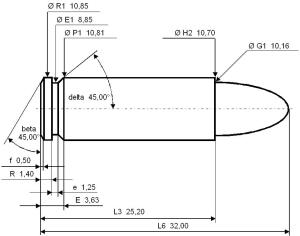
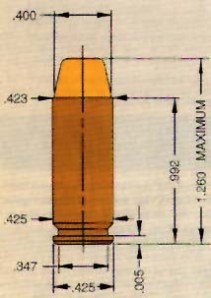
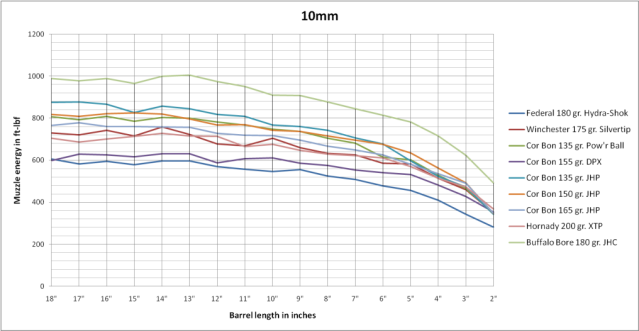
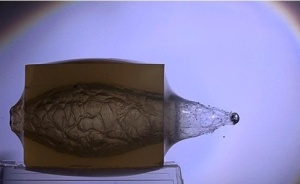
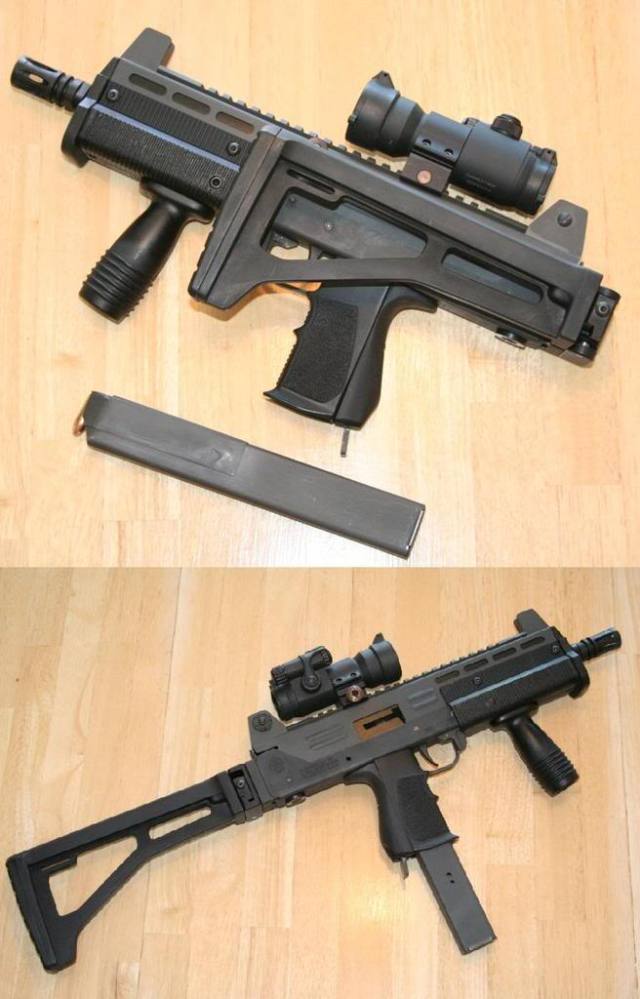

All 10mm fans should write to Sig Sauer, HK, Walther and ask them to make pistols in 10mm.
Imagine a HK 45 in 10mm !!!
LikeLike
SIG recently put out a version of their P220 pistol in 10mm, so at least that’s already been done. To date, H&K hasn’t done anything with the 10mm ever since they made their long-serving 10mm variant of the MP5.
LikeLike
Would the part of your 10 mm Auto layout meant for the carbine profit from a saboted .233 boolit? Sabots are mostly made for .300 bore or thereabouts, but just in case?
LikeLike
There was actually a PDW caliber called .224 BOZ that tried fitting an 5.56mm NATO armour-piercing projectile in a bottlenecked 10mm cartridge, but nothing has been heard about it for a long time. You can still read about that obscure caliber on wikipedia though.
LikeLike
how do i contact you to purchase a PDW 10mm you are currently building?
TIA,
Scott Holtz
770-608-6771
LikeLike
I’m currently trying to find a 10mm barrel for a build in an AR15 pistol caliber carbine format.
My problem is that I can’t seem to find one in a 10 inch length.
Do you know where I can find one?
LikeLike
I read your whole content it’s really interesting and attracting for new reader.
Thanks for sharing the information with us.
hornady critical defense 380
magtech 9mm
bulk 6.5 grendel
5.56 primers
makarov ammo
10mm Ammo
6.5 Grendel
45 ACP ammo
5.56x45mm
Small Rifle Primers
LikeLike